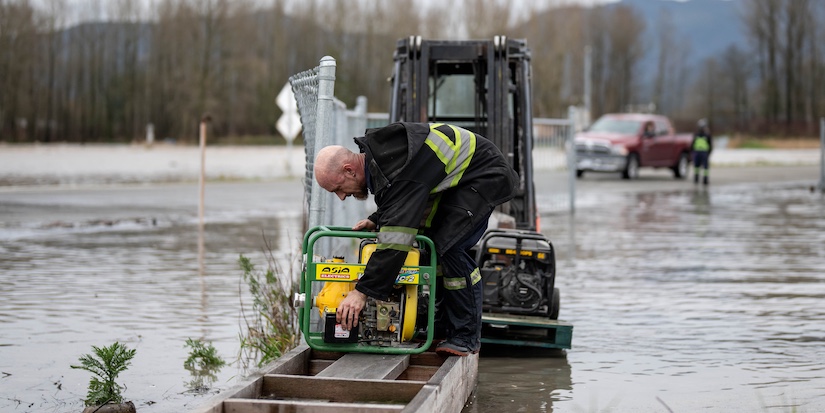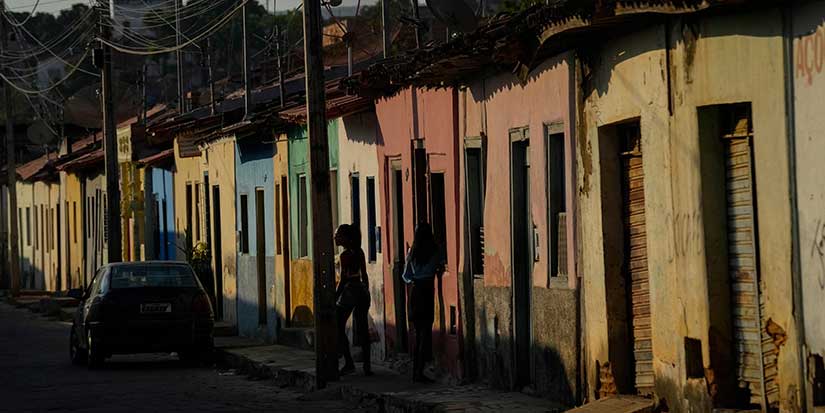Arts & Culture
Virtual radio play seems suited to online performance

By Hannah Scott, Local Journalism Initiative reporter
Published 3:12 PST, Thu December 24, 2020
Last Updated: 2:13 PDT, Wed May 12, 2021
—
A radio play might seem an ideal format for virtual presentation during COVID-19 restrictions that prohibit live theatre.
Although initially intended to be staged for small in-person audiences of 50, Metro Theatre pivoted to an online presentation with their version of A Christmas Carol, which already used the unique radio play format. Six actors play all the parts, as well as creating sound effects (foley) live on stage.
“In some ways, the radio play format allows more play,” says Richmondite Jill Raymond, one of the performers. “The very quick switches between multiple characters is something I hadn’t had the opportunity to do before.”
The radio play also includes on-stage foley effects, which allow audiences to see the sounds of the play exactly as they happen.
“By adding in the foley, that gives the audience something visual to be pulling them in and drawing them into the world of the play,” says Michelle Roebuck, co-props mistress and co-foley designer.
Roebuck, who also lives in Richmond, says foley involves a lot of playing with things to figure out how to create specific sounds. With this play, she and her counterpart Frances Herzer had to find the balance between modern-day actors and a Victorian-era setting.
“The decision was made that if they were the Victorian character, any props and anything they were handling at that point should be period and should look appropriate for the era, but anything they were using for sound effects could be modern,” she says.
Challenging effects included striking a match and recreating the sound of horses’ hooves. But through play and experimentation, a multitude of effects can be created—and Roebuck notes that most TV and film noises are foley, rather than live sound.
“That’s what I love about foley—it’s part of the magic of theatre,” she says. “You’re transporting people into a different place, sometimes a different time, and giving them an experience that they wouldn’t otherwise have.”
And thanks to a strong editing team, the piece was specifically tailored to the small screen, rather than simply being an archival recording made available for public watching. The cast was filmed on two nights with two cameras each time—one static and one moving. There were also a few additional close-up segments filmed, particularly with some effects like lighting a match, that were done after the full show filmed.
“I’m a theatre traditionalist, in that I really believe in the communion of theatre and people being in the same room at the same time, and the shared breath, and the shared moment,” says Raymond. “There’s something that changes when it gets put onto film.”
The recorded version allows for certain elements to shine, including close-ups “like being able to see every wrinkle in Scrooge’s face when he’s scowling,” says Raymond.
Also the creator and artistic director of Direct Theatre Collective, Raymond is well-versed in the struggles the arts world has faced during the pandemic. But she’s also optimistic that from the ashes might come new opportunity.
“Now that we’re rounding out 2020, I think it’s exciting to think about what new mindsets or sparks of ideas might have been created that wouldn’t have happened unless we had had that necessity,” she says.
While Metro is known for its Christmas pantomimes, this show provides something unique and different, and the small-screen presentation means it’s accessible to more people this holiday season.
Access to the filmed performance of A Christmas Carol is available by donation. For more details, click here.
.jpg)



































